New diesels take on traditional pickups
By John Gilbert
The “Big Three” phrase refers to American vehicle competition among General Motors, Ford and Chrysler Corporation, which remains heated today, particularly regarding pickup trucks. The Ford F-150, Chevrolet Silverado and Dodge Ram — just Ram, now, thank you — which are all very capable and competitive full-size pickups.
As fun as it has been to examine and evaluate the newest things from those three every year, there also have been new-age competitors, such as the Toyota Tundra and Nissan Titan, which came on the scene a couple decades back and offer new threats, and the midsize Honda Ridgeline.
The most exciting thing in the past couple of years, though, has been the quest for new economical powertrains. Most recently, Ram passed the Silverado for second place to the all-winning Ford F-150, and then Ram added a couple new diesel-powered models. My favorite was the 3.0 Eco-Diesel, taking advantage of Ram being owned by Fiat, which has all sorts of connections with car and truck makers in Europe, and provided the new turbo-diesel.
Ford, which also has a diesel made in-house, made the most-recent wave, with a new hybrid version of its 3.5-liter V6 EcoBoost twin-turbo, coupled to electric supplemental power.
But there are more. A surprise emerged from Chevrolet, another surprise from Fiat-Chrysler-Ram with their new Jeep Gladiator, both of which can be fitted with compact, 3-liter diesels. The irony of it all is that the Toyota Tundra must now be considered the most tradition-bound in the segment, as the Tundra relies on sticking with the proven product’s excellence and making it better to impress new buyers. We can examine those three new models.
First, let’s check out the Gladiator, which honestly appeared to me to be a bit of a novelty — almost a Wrangler with a bed — when I first checked one out. It turns out to be very popular, and people who have always wanted a Jeep for its obvious ruggedness and outdoorsy image, can now get a Jeep and a pickup too, with the Gladiator.
Having driven and reviewed the Gladiator with Chrysler’s tried and true and powerful 3.6-liter V6, I was presented with another one, a 2021 model, in dazzling Firecracker Red that was close to red-orange, and easy to spot coming at you or in a parking lot.
The beauty of the new test Gladiator was under the hood, where that 3.0-liter EcoDiesel from the full-size Ram 1500 is also available in the new Gladiator. The regular 3.6 V6 is a strong and durable engine, with 285 horsepower and 260 foot-pounds of torque. The 3.0 EcoDiesel is turbocharged with 260 horsepower — 15 less than the gas V6 — but with an amazing 442 foot-pounds of torque — 182 more than the 3.6 gas — peaking at a mere 1,400 RPMs.
That low-end torque gives the Gladiator big-boy towing capability. Owners can have fun doing the off-road things that Jeeps like to do, or use the Gladiator for grocery store runs, and also tow boat or camping trailers with relative ease. The price for all that starts at $40,395 but zooms up to a sticker of $61,435 with the turbo-diesel and all the high-tech electronic stuff that contemporary vehicles have to have these days. Fuel economy s listed as 22 city 28 highway, and I think the highway number is reachable pretty much everywhere with the slick, Italy-sourced turbo-diesel V6.
With a smooth 8-speed automatic, the Gladiator also gives the corporation a new warrior for the pickup battles, and with that engine, it joins the various Ram models as a new sibling alternative.
The Chevrolet Silverado has become something of a punching bag for truck critics. I think the styling is very neat, and I like the interior and the comfort of the truck, but truck zealots look at the tried and true F-150 and the surging Ram and declare the Silverado interior to be seriously lacking. I’m not sure, but I think Chevy folks think the Silverado is just fine, and wouldn’t consider a Ford of any stripe, or a Ram, even if they might take a second glance at a Gladiator.
So the test Silverado showed up, and, guess what? It came equipped with a 3.0-liter Dura-Max turbodiesel. Caught me by surprise, but here we have the truck most critics say is trapped by tradition with its pushrod V8s, branching out to join the mini-trend to compact-size diesel engines, turbocharged to add the necessary punch.
The test Silverado came in Cherry-red tintcoat paint, a most beautiful shade of dark, cherry-red I’ve ever seen. I don’t know what they call the color on the new red Corvette, but given a choice, I think the Silverado’s Cherry-red tintcoat is the best red I’ve ever seen on any General Motors product.
Diesel engines always run strong and are extremely durable and trouble-free, if you maintain them properly. This one had a very plain and businesslike interior in black, but the bucket seats were supportive and comfortable, and the 10-speed automatic transmission worked well with the U.S. built engine, and the full-size Silverado has excellent acceleration and cruising capability.
With all the current safety equipment, such as lane-change assist, blind-spot detection, and all the imaginable connectivity, the Silverado seemed to add capability to the standard gas-engine pickup. Base price was $52,400 standard, and as tested $60,265. Fuel economy lists as 22 city and 26 highway, which is, of course, the other major asset of a turbo-diesel — delivering such great torque and also executing a big edge over gasoline counterparts in fuel economy.
Big Three stalwarts tend to scoff at the Tundra, but when Toyota moved its home office to near Spring, Texas, it verified how serious the company was in building on its cult-like slice of the pickup market. The test Tundra was the “1794” model, with a plaque on its flanks to commemorate the date of the start of the historic JLC Ranch, the oldest working ranch in Texas, obtained by Toyota as the site of its new truck factory. Both the Tundra and Tacoma are built there.
Already at the top of its game with cars and SUVs, Toyota has steadfastly stuck with its proven truck designs, and its powerful and smooth dual-overhead-camshaft V8 in the Tundra. Strong and impressive, the Tundra, and its midsize sibling Tacoma, have added high-tech features to the legendary comfort and style inside, and the two annually score at the top for buyer satisfaction and resale value among all trucks.
Toyota doesn’t follow the traditions of Ford, Chevy or Ram pickups, and doesn’t change interiors or sheet metal for superficial reasons, preferring to stick with its pleasing design and interior features. When you first climb aboard the Tundra, you are taken by the rich leather, and the real wood on the steering wheel and trim. This, you immediately realize, is the Lexus of pickup trucks.
The 5.7-liter V8 was originally designed for the biggest Lexus luxury LS sedans, but it worked well enough — even if more smooth than truck-rugged-feeling — it found an alternate home in the Tundra. Now aging, the engine may be in need of being upgraded, but Toyota undoubtedly is looking ahead to adding hybrid or electric power to the Tundra. For now, the Tundra satisfies all the demands Toyota has for it as a niche vehicle among pickups.
A neat alternative is the rugged structure of the Tundra, which comes in extended cab or CrewMax, with front-hinged rear doors even on the extended-cab model. The reasoning is that the pillar located at the front of the rear door makes a stronger structural cab. While its dual overhead cam V8 is not as fuel efficient as a diesel, with figures of 13 city and 17 highway driving, it has a great, racer-like sound as it revs, and traditional pickup buyers might prefer it.
There are countless pickup options out there these days, and these three are just among the latest.


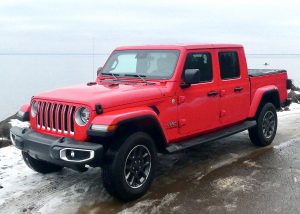
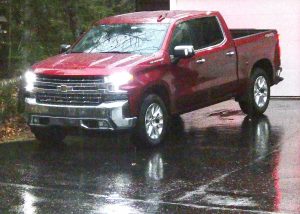


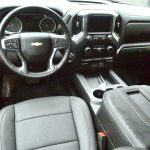
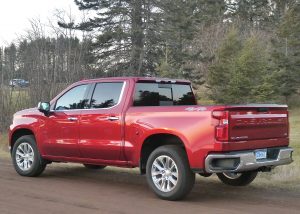
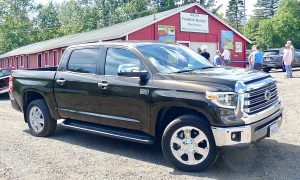

 John Gilbert is a lifetime Minnesotan and career journalist, specializing in cars and sports during and since spending 30 years at the Minneapolis Tribune, now the Star Tribune. More recently, he has continued translating the high-tech world of autos and sharing his passionate insights as a freelance writer/photographer/broadcaster. A member of the prestigious North American Car and Truck of the Year jury since 1993. John can be heard Monday-Friday from 9-11am on 610 KDAL(www.kdal610.com) on the "John Gilbert Show," and writes a column in the Duluth Reader.
John Gilbert is a lifetime Minnesotan and career journalist, specializing in cars and sports during and since spending 30 years at the Minneapolis Tribune, now the Star Tribune. More recently, he has continued translating the high-tech world of autos and sharing his passionate insights as a freelance writer/photographer/broadcaster. A member of the prestigious North American Car and Truck of the Year jury since 1993. John can be heard Monday-Friday from 9-11am on 610 KDAL(www.kdal610.com) on the "John Gilbert Show," and writes a column in the Duluth Reader.